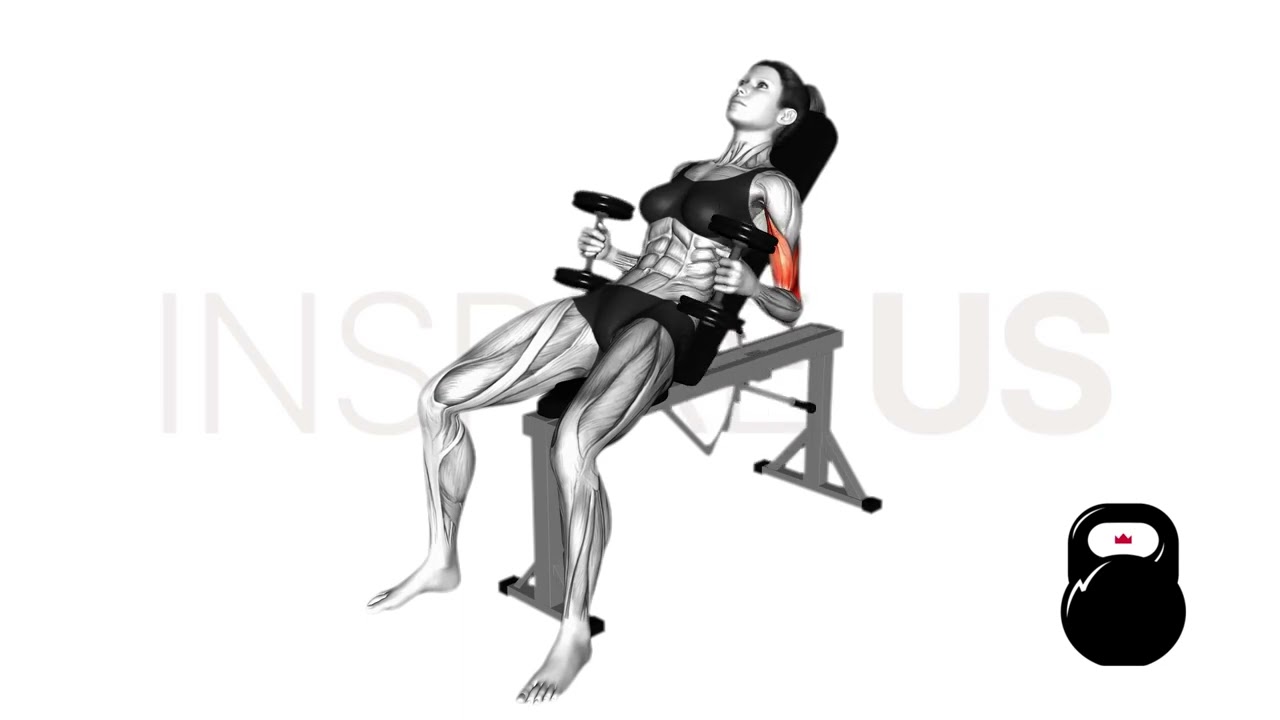Incline Hammer Curls: Benefits, Muscles Worked, and More
For lifters seeking that thick and “3-D” look of the arms, there are few exercises as effective as the incline hammer curl - a variation of a well-established arm exercise that takes the muscular activation to an entirely new level.
Prior to adding this rather useful bodybuilding exercise into your routine however, it is important to understand the more salient points and characteristics of what makes the incline hammer curl what it is.
The incline hammer curl is primarily a biceps exercise that may be performed with light weight and at great volume, and is widely accessible to exercisers of all levels of experience. For the proper way to perform them, common mistakes to avoid and what sort of benefits to expect - read onwards.
What are Incline Hammer Curls?
From a more technical point of view, incline hammer curls are a multi-joint “pull” compound exercise primarily used as an accessory movement for training the arms.
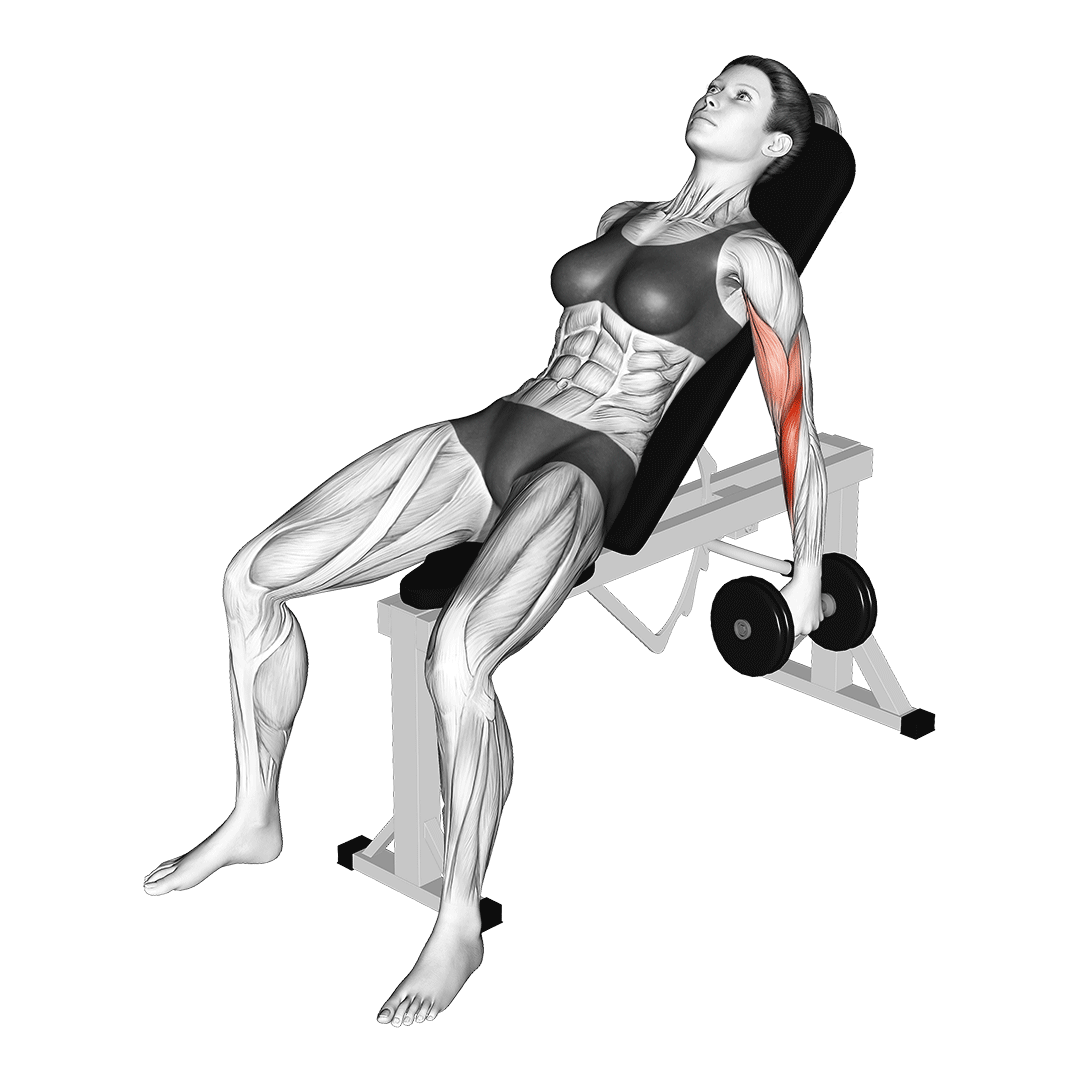
They are relatively simplistic in terms of form cues and execution, and can be performed by novice level lifters without much risk of injury.
Who Should Perform Incline Hammer Curls?
Incline hammer curls are a readily accessible movement for anyone with access to a dumbbell and an inclined exercise bench.
In terms of exercise familiarity requirements, so long as the lifter is capable of following relatively simple form cues, then the movement may be performed with no risk of injury and absolute effectiveness.
Equipment Used to Incline Hammer Curl
The incline hammer curl requires a single dumbbell, but is ideally performed with a pair of dumbbells.
Furthermore, it will also require an incline exercise bench, adjustable or otherwise.
How to Perform Incline Hammer Curls
To perform a repetition of incline hammer curls, the lifter will lie on a bench that places their torso at an angle between 45-70 degrees.
Gripping the dumbbells in their hands with the palms facing towards the midline of the body, the exerciser will pin their shoulder blades beneath them by retracting the scapula and keeping the shoulders at a neutral rotation.
Keeping the upper arms stationary, they will then bend the elbows and squeeze their biceps, drawing the dumbbells upwards until the tops are nearly at shoulder-height.
Holding this position for a count, the lifter will then slowly allow their arms to return to their original hanging position at their sides, thereby completing the repetition.
What Muscles are Worked by Incline Hammer Curls?
As a compound movement, incline hammer curls will work multiple muscle groups, of which are; the biceps brachii, the brachialis and the brachioradialis.
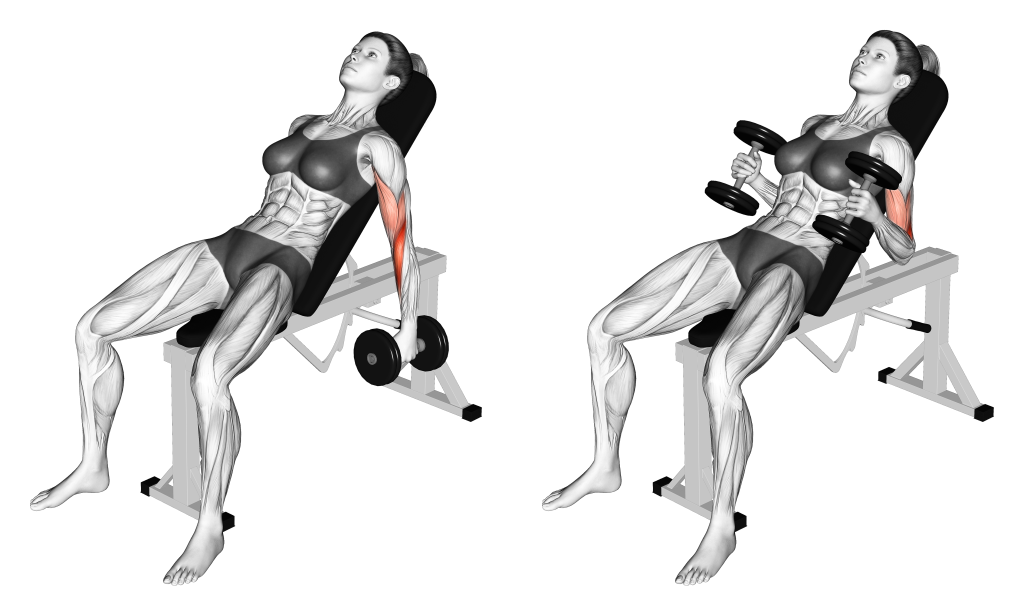
These three muscles are responsible for elbow flexion and general stabilization of the entire arm during movement, with the biceps and brachialis making up two-thirds of the upper arm, while the brachioradialis wraps around the top of the forearm and is the largest single forearm muscle.
What are the Benefits of Incline Hammer Curls?
Incline hammer curls offer more than just targeted biceps training - they are also capable of offering a number of benefits that can be difficult to replicate with other dumbbell curl variations.
Thicker, 3-Dimensional Arms
Due to the position of the brachialis and brachioradialis along the structure of the arm, improving their size can create a more 3-dimensional look to the arms, making them appear more muscular from all angles, rather than just the sides as a conventional bicep curl would do.
Furthermore, this will also create a thicker arm for much the same reasons - making it an invaluable exercise for bodybuilders or other lifters seeking improvements in the proportionality of their body.
Elbow Flexion Reinforcement
Due to the fact that all the muscles trained by incline hammer curls aid in the elbow flexion biomechanic, it should be no surprise that regular performance of the exercise will result in said mechanic becoming more stable and efficient over time.
This ties well into other athletic activities that utilize the same biomechanic, such as performing rowing exercises or pull-ups.
Improved Forearm and Bicep Strength
If performed with the correct length of time under tension, incline hammer curls will provide sufficient stimulus to induce strength development in the forearms and biceps - especially if paired with heavier compound exercises that target the same muscle groups, such as rows, pull-ups or chin-ups.
Low Risk of Injury, Ease of Usage
Due to the low amount of weight used, advantageous position and general simplicity of the movement, incline hammer curls are among the safest arm exercises possible - with a lesser risk of wrist pain in comparison to dumbbell bicep curls, and a reduced chance of forearm pain in comparison to barbell curls.
So long as they are performed in a slow and controlled manner with additional attention paid to form, exercisers of all levels should be able to take advantage of the benefits of incline hammer curls.
How are Incline Hammer Curls Programmed?
Incline hammer curls are generally programmed for moderate volume sets with low to moderate amounts of weight, as using a heavy amount of weight is entirely unnecessary due to the size of the muscles being recruited.
In terms of their placement within a workout’s order of exercises, incline hammer curls will usually be placed after heavy compound exercises have already been completed, often alongside other low-weight exercises, or isolation movements.
A good starting program for incline hammer curls would be 2-3 sets of 8-10 repetitions, with the weight beginning considerably low and increasing until the exerciser has reached an RPE of 7-8.
Common Mistakes of the Incline Hammer Curl
Despite the relatively low complexity of the incline hammer curl, there are still several mistakes that lifters are prone to making - most of which may potentially lead to minor injuries, or otherwise reduce the effectiveness of the exercise by changing how the muscles are used.
Swinging the Arms
Just as is the case in many other curl-type exercises, swinging the arms so as to generate momentum can increase the risk of tendons tearing due to the force being placed on them.
Furthermore, doing so can reduce the amount of weight placed on the actual muscles themselves, thereby reducing training stimulus produced by the exercise and creating a less effective workout overall.
Repetitions of the incline hammer curl are meant to be performed in a slow and controlled manner, with little to no swinging or momentum taking place whatsoever.
Detaching or Floating the Elbows
Though some level of elbow movement is unavoidable during a repetition of incline hammer curls, detaching them from the sides of the body or moving them excessively can cause the weight to be placed on the shoulders, rather than the forearms and biceps.
This will produce a less effective exercise, and ultimately sabotage the progression of the lifter.
It is best to keep the elbows as stationary as possible when performing the exercise.
Rotating the Wrists
Incline hammer curls are performed with the dumbbells gripped in a neutral manner, meaning that the palms are facing one another throughout each repetition.
Some lifters may unintentionally rotate the wrists as they pull the dumbbells upwards, either creating a disadvantageous position and increasing the risk of injury, or otherwise transforming the exercise into an incline dumbbell curl and entirely eliminating the brachioradialis from the exercise.
The wrists should remain in a neutral position throughout the incline hammer curl, avoiding any sort of movement as much as possible.
Insufficient Trunk Incline
Though more of an equipment issue rather than a form mistake, performing incline hammer curls with an insufficient incline of the torso will turn it into a conventional hammer curl instead.
The reason why incline hammer curls require a 45-70 degree angle of the trunk is to increase the range of motion of the arms, as a conventional standing hammer curl will have a somewhat shorter distance for the dumbbells to travel.
Performing the Movement Too Quickly
Just as how swinging the arms during the incline hammer curl can defeat the entire purpose of the exercise, so too can perform the exercise too quickly - even if the movement is entirely controlled and no momentum takes place.
This is because of time under tension, wherein the muscles being worked must remain contracted under stress for a length of time so as to induce muscular hypertrophy.
As such, to take advantage of the many benefits of incline hammer curls, each repetition should be performed slowly so as to provide sufficient time under tension and ensure that the muscles are thoroughly activated.
Incline Hammer Curl Variations
If you’ve grown bored of performing incline hammer curls, or otherwise wish to try out different variations of the exercise, there are several similar movements that may take its place without much change in terms of what muscles are recruited.
Conventional Hammer Curl
The conventional hammer curl is simply the incline hammer curl performed from a standing position, featuring a shorter range of motion but a greater level of convenience, as it requires no incline exercise bench and may be performed with little space available.
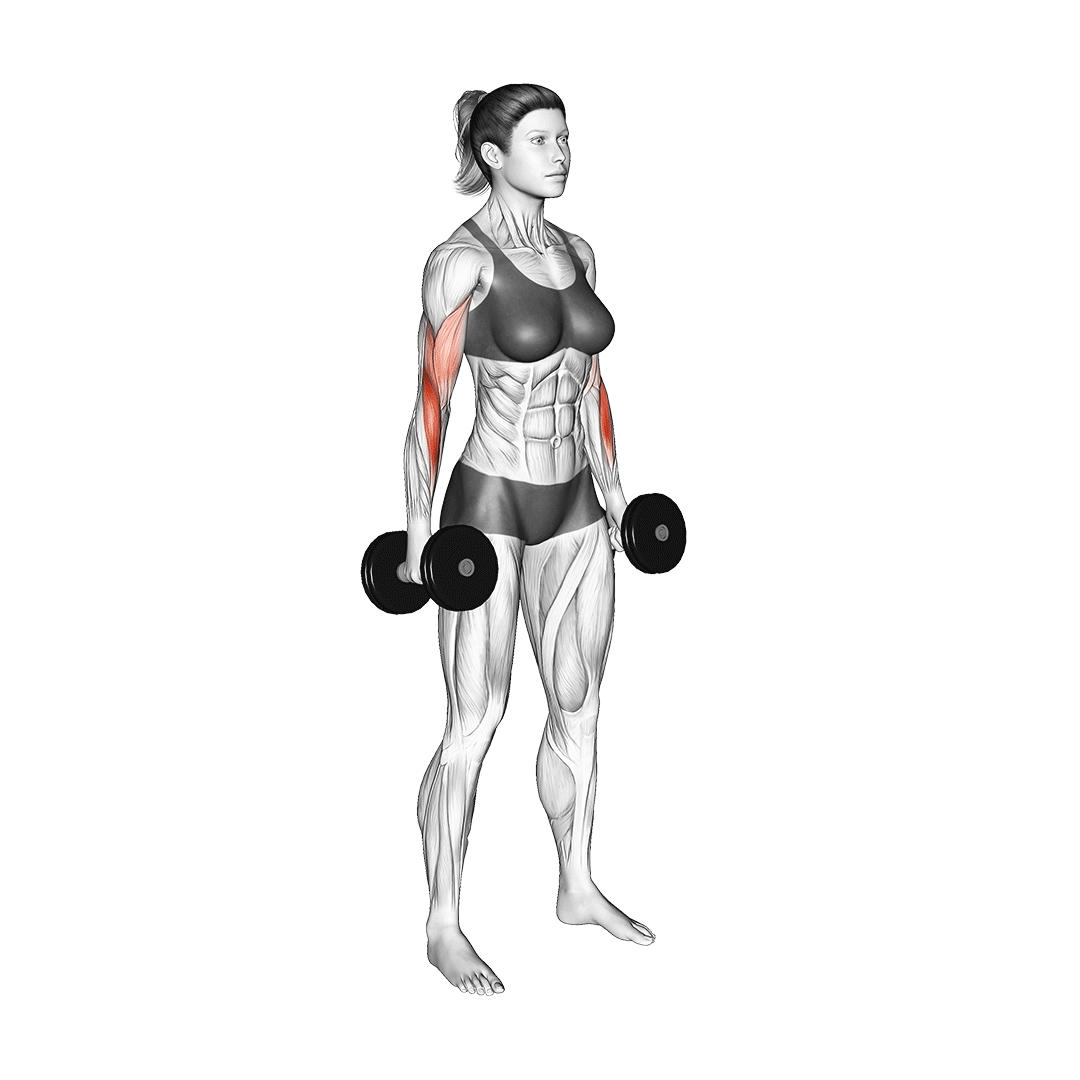
Machine or Resistance Band Hammer Curls
Hammer curls may be performed with a specially-purposed hammer curl machine, or otherwise with a resistance band.
The main benefit of doing so is the lengthened time under tension of either exercise, as well as the relatively reduced risk of injury, as is the case in all resistance band and machine-based exercises.
Cross-Body (Standing) Hammer Curls
Cross-body hammer curls are a modification of the conventional hammer curl where the exerciser will draw the dumbbells in alternating fashion across the torso, increasing the range of motion and targeting the brachialis muscle to a greater degree.
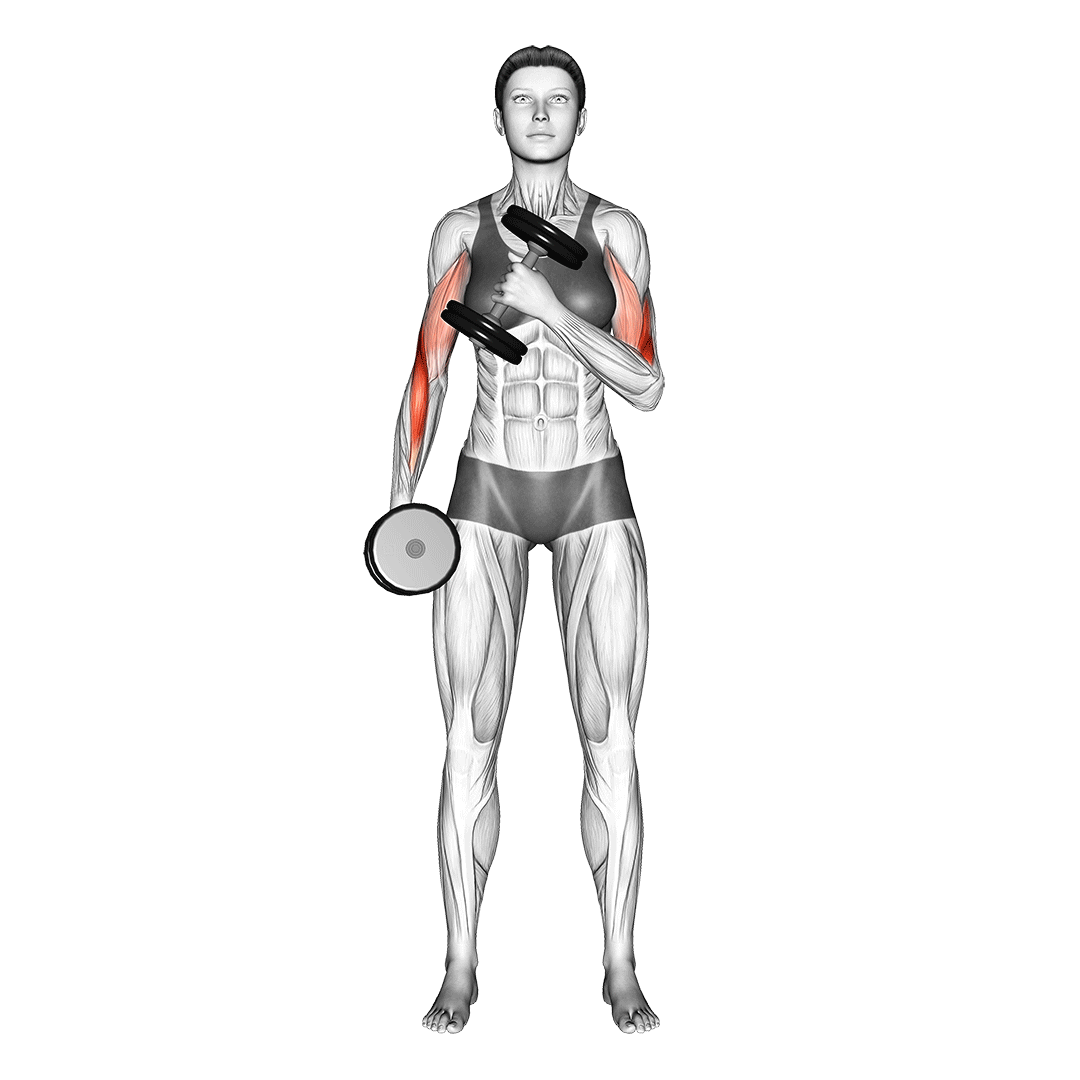
Due to the incline of the torso, this is otherwise not feasible for incline hammer curls, and as such it can only be performed from a standing position.
Alternating Incline Hammer Curls
Alternating incline hammer curls are simply incline hammer curls performed with one arm moving at a time.
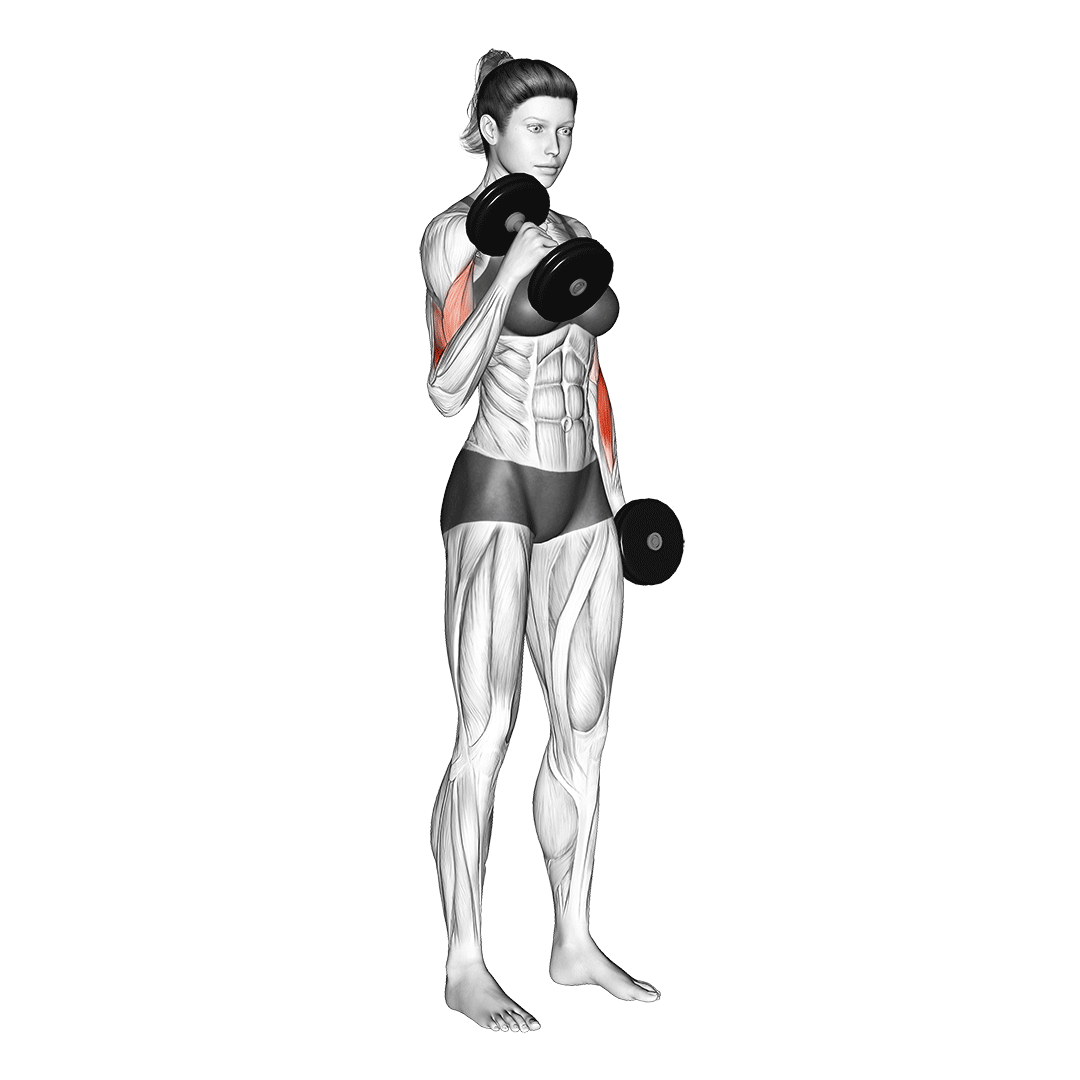
This allows the lifter to focus better on recruitment of one side of the body, reinforcing mind-muscle connection and possibly improving muscular activation intensity.
Frequently Asked Questions (FAQ)
Are Incline Hammer Curls Harder (Than Conventional)?
Yes - the incline version of the hammer curl features a wider range of motion, meaning that the muscles are worked to a greater degree, and the time under tension of each repetition is considerably longer.
Because of the biomechanics involved in the incline hammer curl, this roughly equates to the biceps being worked harder than during a conventional hammer curl.
Do Incline Hammer Curls Work Forearms?
Yes - the majority of hammer curl variations (including incline hammer curls) will work the muscles of the brachioradialis, of which is a superficial yet rather large muscle located at the top of the forearm. It is responsible for elbow flexion, but is also utilized for movement of the forearms in certain directions.
Apart from the brachioradialis, the incline hammer curl will also recruit most other muscles of the forearms in a stabilizing capacity.
Is an Incline Hammer Curl Better Than a Standing Hammer Curl?
In certain respects - yes, the incline hammer curl is better than the standing hammer curl.
The incline hammer curl features a wider range of motion, reduced opportunity to “cheat” the repetition through swinging, as well as reduced involvement of the shoulders - meaning that the muscles of the biceps and forearms are worked to a greater degree.
Final Thoughts
Incline hammer curls are one of the best ways of working the often-forgotten muscles of the brachialis and brachioradialis, not to mention efficient and quite safe to boot.
We fully recommend giving them a try by incorporating 2-3 sets of 8 repetitions each around the end of your workout.
References
1. Marcolin G, Panizzolo FA, Petrone N, et al. Differences in electromyographic activity of biceps brachii and brachioradialis while performing three variants of curl. PeerJ. 2018;6:e5165. doi:10.7717/peerj.5165.
2. Oliveira LF, Matta TT, Alves DS, Garcia MA, Vieira TM. Effect of the shoulder position on the biceps brachii emg in different dumbbell curls. J Sports Sci Med. 2009 Mar 1;8(1):24-9. PMID: 24150552; PMCID: PMC3737788.

